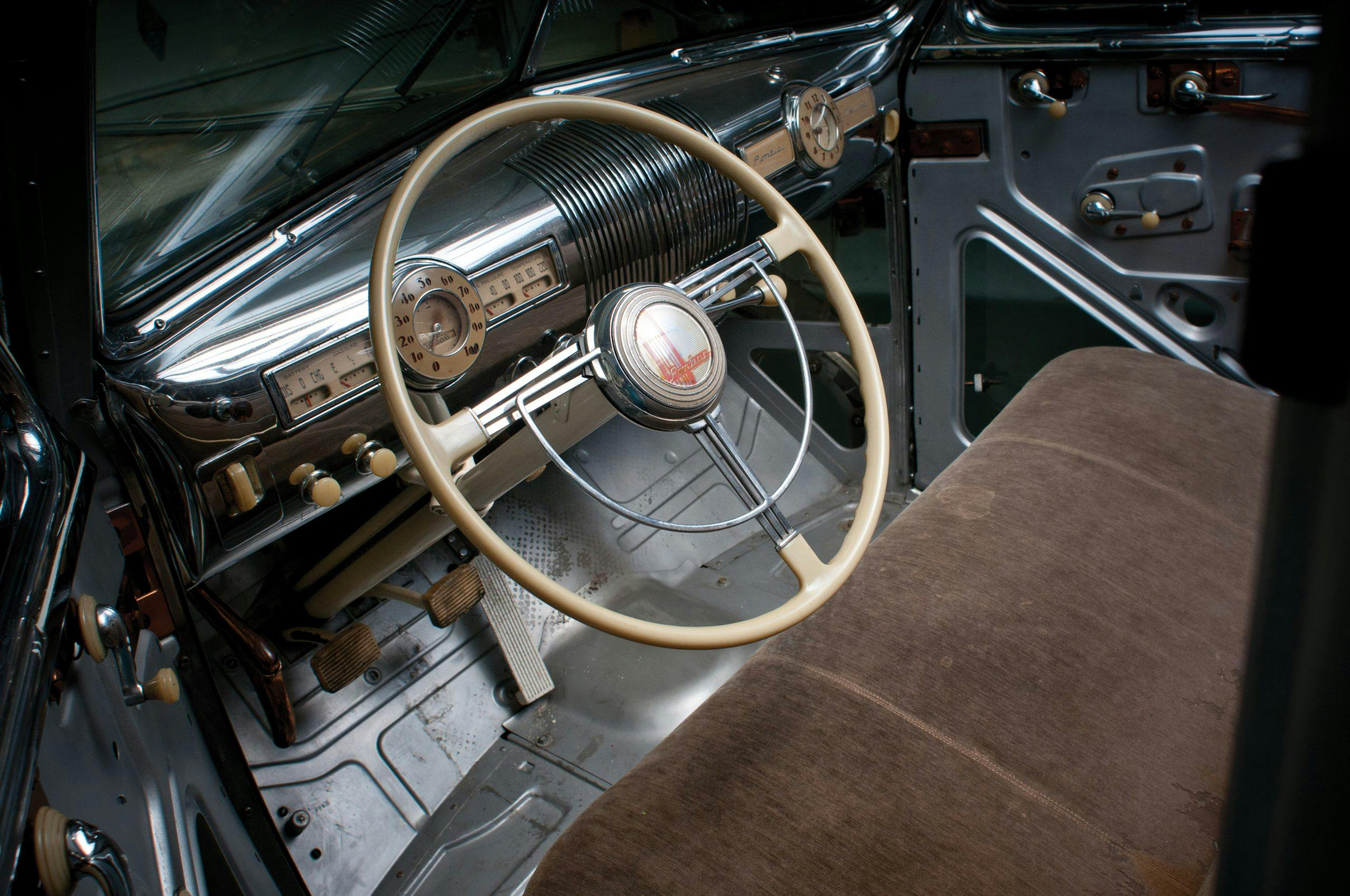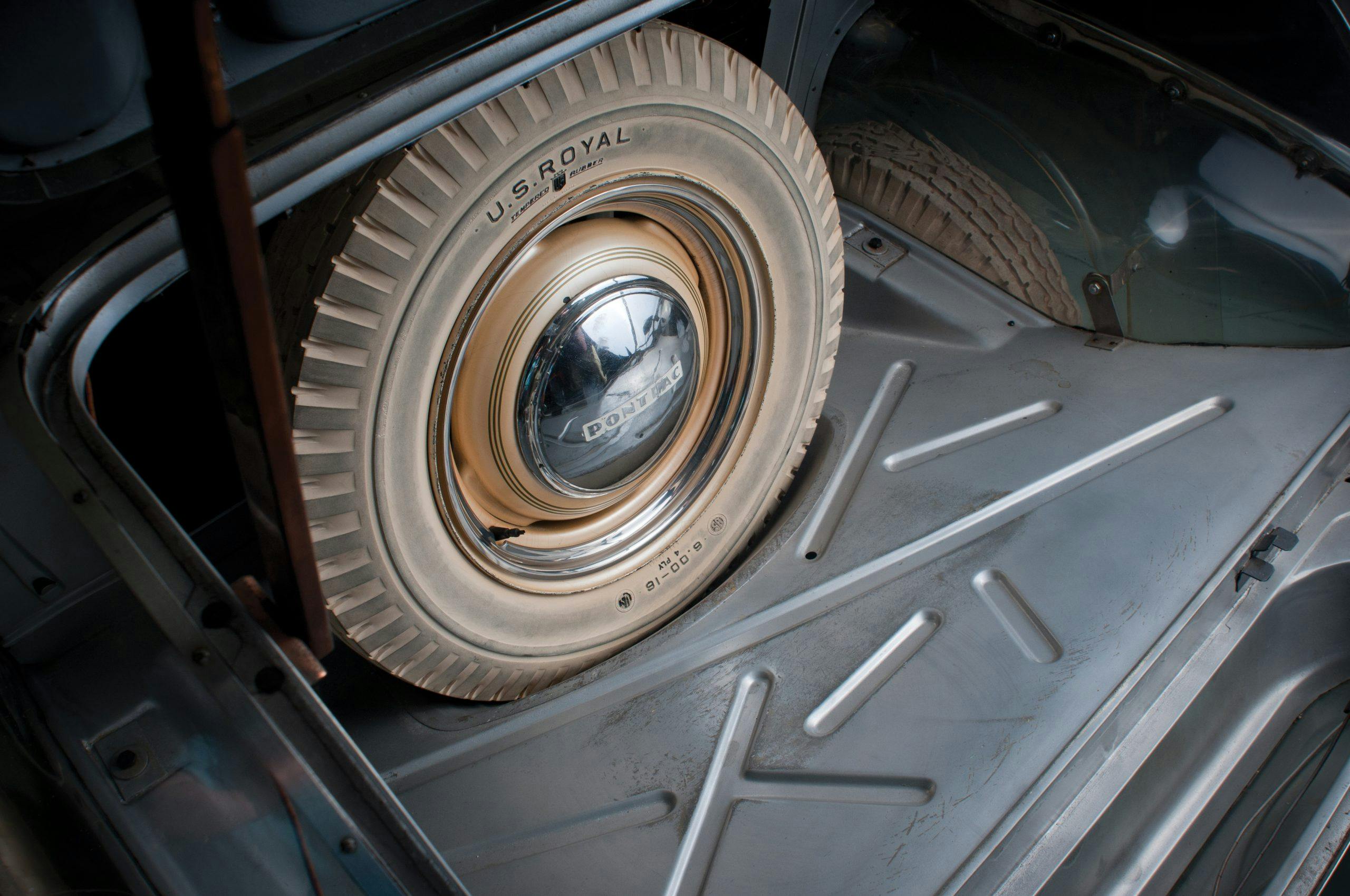The wild “Ghost” Pontiac embodies the spirit of 1939’s New York World’s Fair
In the 1967 film The Graduate, a young Dustin Hoffman is taken aside by a friend of his parents, Mr. McGuire, to receive some career guidance. “I want to say one word to you … just one word. Are you listening?” McGuire tells Dustin. “Yes, sir,” the younger man replies. “Plastics!” says McGuire, “There’s a great future in plastics.”
If plastics had a great future in 1967, they were hot stuff three decades earlier, when synthetic polymer plastics first broke onto the market. Most automotive history buffs remember 1939’s New York World’s Fair for GM’s wild “Futurama” exhibit; what they may not remember from that very same fair is the Ghost Pontiac, a four-door sedan trimmed in white rubber and bodied exclusively in acrylic. (We’ll refrain from the poltergeist puns.)
Phenol-based plastics like Bakelite had been around for a while in the late ’30s, but their chemistries were relatively primitive and had limited applications compared to their modern equivalents. After eight years of research, in 1935, DuPont’s Wallace Carothers developed the first successful synthetic thermoplastic polymer based on polyamides. We know it as nylon. Extruded as fine filament and then knit into fabric, the first modern engineering plastic was not immediately pressed into industrial service. The first products made from nylon were women’s stockings. The silk replacement, however, was used extensively during World War II—in parachute canopies, for example.
Another sort of WWII canopy, the kind that enclosed the cockpits of fighter aircraft, was made of another then-new plastic material: Plexiglas, the branded name for Rohm & Haas’ polymethyl methacrylate (PMMA) sheet. While DuPont had tried—and succeeded—to develop a synthetic fiber, Rohm and Haas’ clear acrylic sheet had a more serendipitous origin.
In the mid-1930s, Rohm & Haas was developing automotive safety glass. The glass used in car windshields is actually a laminate, with a thin layer of clear plastic pressed between two sheets of silicon glass. When a windshield shatters in a crash, that plastic keeps razor-sharp shards of glass from flying into the car’s occupants. Fortuitously, Rohm & Haas realized that one of the acrylic compounds it used to make safety glass could work by itself as a transparent material for glazing and other applications. To publicize the new material, the chemical company and one of its biggest customers, General Motors, decided to build a very special Pontiac.
With the big 1939 New York World’s Fair on the horizon, General Motors and every other major automaker strove to create a truly eye-popping pavilion. GM stole the show, however, with its “Futurama” display, which predicted what cities and roads might look like in 1960, and its “Previews of Progress” exhibit showing the latest consumer technologies. However, there was a third GM product occupying prime real estate on the 1939 show brochure: The “Glass Car—The first full-sized transparent car ever made in America.”

The “Glass Car” was a 1939 Pontiac Deluxe Six four-door touring sedan with a completely transparent body, thanks to engineers who replaced all its exterior sheet-metal with crystal-clear acrylic sheet. To give it even more visual pop, the underlying structural steel panels were plated with copper, and the dashboard and steel hardware were chrome-plated. To complement the transparent body, all the seals, the gaskets, running board mats, and even the tires were made of white rubber supplied by the U.S. Royal tire company (today Uniroyal). Surprisingly, Rohm & Haas did not cast a clear acrylic steering wheel for the car, as coachbuilder Guilloré did for its 1949 Delahaye 135M cabriolet. Instead, Pontiac used a stock ivory-colored steering wheel, likely made of catalin, a derivative of bakelite.
The budget for the Ghost Car was said to be $25,000; that works out to over $460,000 in 2020 U.S. dollars—which is roughly what you’d spend for a hand-built, one-off concept car today.
The Ghost Pontiac is fully functional. Aside from the white rubber and see-through panels, the car is a stock ’39 Series 26 Pontiac. It has an 85-hp, 222.7-cu-in L-head inline six-cylinder, a three-speed manual transmission with a column shifter, independent front suspension with coil springs, a live rear axle with semi-elliptic leaf springs, and four-wheel hydraulic drum brakes—all conventional stuff for the late 1930s. For the second year of the New York World’s Fair, the car was updated to reflect changes for the 1940 model year.
While the show brochure says the see-through 1939 Pontiac was made “by Fisher body,” the acrylic panels were actually made by Rohm & Haas from engineering drawings supplied by General Motors. It’s not clear whether the panels were cast or stamped (you can press acrylic sheet into dies if you heat it gently), but most likely, the team used a variety of fabrication methods.
A second “Ghost Car” Pontiac, this one based on a Torpedo Eight chassis, was fabricated for the 1940 Golden Gate Exposition held on Treasure Island in San Francisco Bay. After their respective expositions ended, the two transparent Pontiacs went on tour at dealerships across the country. The fate of the eight-cylinder car is not clear; most assume that it no longer exists.
In contrast, the provenance of the original 1939–40 Ghost Car is well documented. After the dealer tour it was loaned to the Smithsonian Institution in Washington, D.C., where it was on display until 1947. From the late 1940s until 1973 it passed through the hands of several Pennsylvania-based Pontiac dealers. That year it was bought by Don Barlup, of New Cumberland, Pennsylvania, who commissioned a partial restoration by S&H Pontiac of Harrisburg. Barlup then sold the Ghost Car to collector Leo Gephart in 1979, who in turn sold it in the early 1980s. The same family owned the car until 2011, when it was sold for $308,000 at RM’s St. John’s auction with just 86 miles on the odometer. The seller, whose father bought it from Gephart, told me he hoped that General Motors would buy it for its Heritage Center collection; instead, the Ghost Car went to another private buyer.
As far as I’ve been able to determine, the Ghost Pontiac has not been on public display since the auction.

When I saw the car in 2011, it was still in very good condition. That’s rather remarkable considering that, despite the Plexiglas brand name, acrylic isn’t all that flexible and the car has been driven, undoubtedly stressing the material. Some of the panels had cracks and the hood was badly crazed with spider cracking, but by then the Ghost Car was 72 years old; you’d expect a bit of patina from any vehicle of that age that’s still in original condition. Even if that patina, like the car itself, is rather out of the ordinary.










